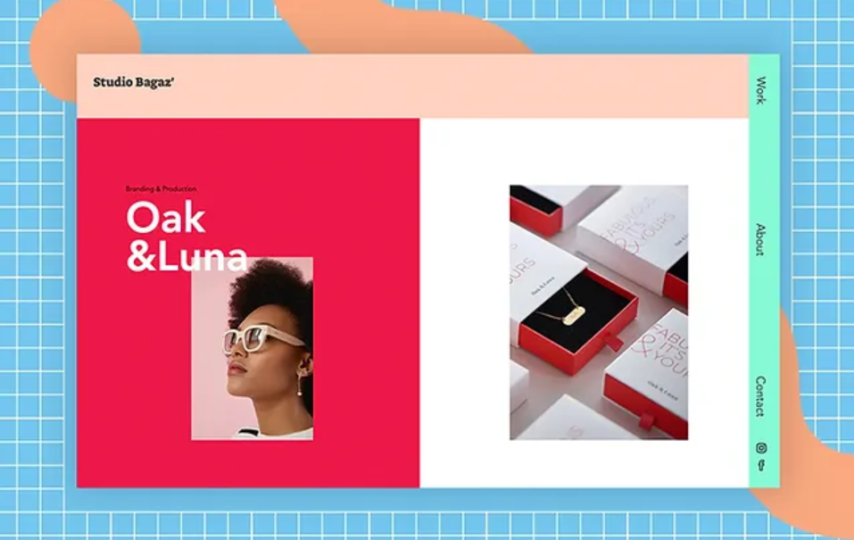The portfolio is the required equipment for however intended to work in the web design industry. The design portfolio, both physical and website, is a manifest of the designer`s previous work, experience, style, and other characteristics. In order to be hired either by an individual client or company, the designer has to present their portfolio. In today’s post, our experienced Alpha Efficiency will provide tips and suggestions on how to create an imposing portfolio website that will adequately present your work and light up your best projects.
- Expose your best work
As the average visitor spends between 10-20 seconds before deciding whether they will stay or leave the website, the same comes to the online portfolio. This implies that you have around 15 seconds to make a good first impression. Display your best design project first to attach potential employers to look further. There is no need to expose every work you did and insignificant projects. Focus on those you consider that are the greatest examples of your abilities. We often recommend showing between 6 and 10 of your absolute best projects.
If you have worked in different industry domains, we recommend you divide them and group them into categories. This will make your portfolio look organized and neat. Emphasize the kind of projects you are great at and prefer to work on.
- Make portfolio up-to-date
Fresh up your portfolio by adding new projects you have accomplished. This will demonstrate your talents, new skills, and professional progress as a designer. Updating your portfolio with new projects will reflect the diverse styles and solutions you have mastered.
- Add context
Context is a great way to tell the story about your most successful projects. Additionally, use context to explain how a certain design was created and explain the production process. Provide a step-by-step demonstration of the building process for your most impressive work. Case studies are a great way to present projects with relevant details, and walk clients through the design process till the final product.
- Use a portfolio to introduce yourself
Although the portfolio is the primary material for project representation, you should use this website segment to introduce yourself. Briefly present who you are and what you do with a compact bio. Submit your experience, background, skills, and your highest achievements. Incorporate your logo in your portfolio in terms of self-promotion and branding your work.
- Clear navigation
Accessible portfolio and clear navigation. While the homepage of the portfolio welcomes interactive elements, the portfolio itself is a more functional part of the website. Clear navigation will not distract visitors from the portfolio purpose which is to know who you are, your design, style, and abilities.
- Awards
The portfolio is an excellent place to highlight your awards, rewards, and recommendations of previous satisfied clients. Certifications, licenses, and verification for attending conferences and forums provide a sense of trust and reliability. Thus, it adds to reputation and prestige. If you have been working with well-known clients, companies and brands make sure to highlight these collaborations as they will add to your credibility.
A convenient way to represent the opinion of your happy customers is to publish direct quotes they tell about your service.
Additionally, this segment can spotlight your education and qualifications.
- Link to live examples
Implement links to the existing websites you have designed. The live examples are a favorable piece of evidence of your skills and professionalism. Showing that previous clients’ investment has been justified with the currently using websites and has been paid off will convince potential employers of the legitimacy of portfolio testimonies.
- Search Engine Optimization
As personal portfolio profiles are barely present in Google search, optimizing your website portfolio to search engines makes it a great opportunity for clients to find it. Fill metadata for your images and pictures, determining an effective domain name and keywords that Google will associate with your web portfolio.
- Homepage design
For the portfolio site section, the homepage is what a cover is to book. It should grab visitors’ attention and generate interest in the portfolio. The homepage should reflect your identity, personality, and creativity, therefore should be in tune with your general style and share the same vibe as the entire site. Take a good look at how would you like to visitor perceive your brand and impart appropriate typology and color scheme. Add interactive elements that will add a motion to the appearance.
Final Thoughts
As a portfolio represents a first glance at your work qualities and grabs the attention of potential employers, the portfolio should be seamless to shine a light on your projects and capabilities. Presented tips will surely help you create a portfolio that stands out. Don’t be misled that a portfolio with your previous projects will speak for itself, the portfolio is the part as every other on the website and should be built like the rest to provide an excellent user experience just like other website pages.








